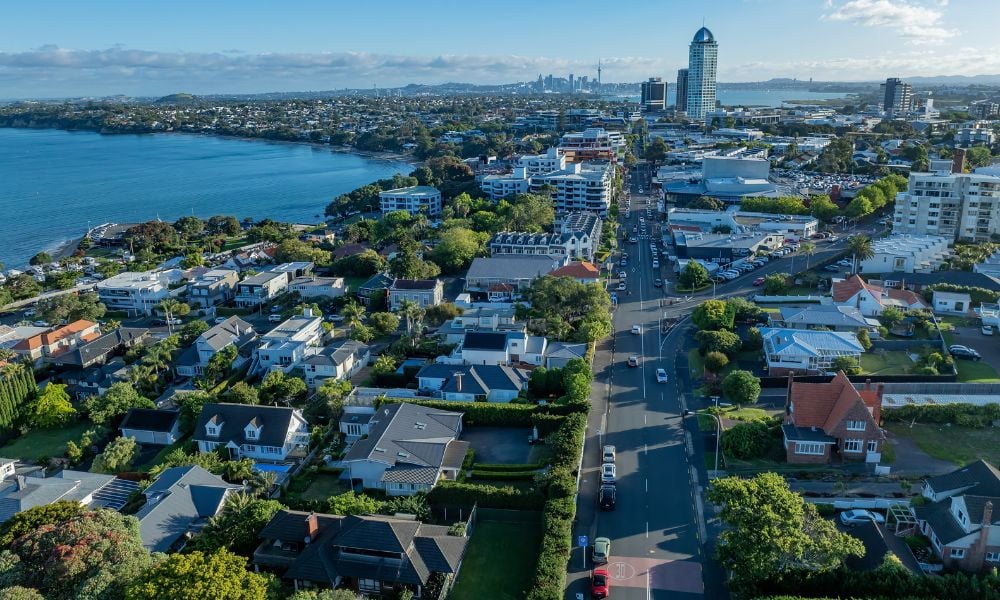Housing market subdued despite improving buyer sentiment, Squirrel reports

New Zealand’s economy may be edging out of recession, but it’s far from a strong recovery.
Weak GDP growth, stagnant unemployment, and a sluggish housing market are setting the scene for further interest rate cuts, according to Squirrel’s latest NZ property market update for May.
Interest rates tipped to fall further
The official cash rate (OCR) is now expected to fall to 2.75% by August, with 0.25% cuts anticipated at each of the next three RBNZ meetings on May 28, July 9, and Aug. 20.
“An OCR of 2.75% feels like an appropriate target,” Squirrel said. “Domestically, there just isn’t a case for rates to get much lower than that, and the Reserve Bank will be really mindful of not wanting to drop interest rates like they did during COVID.”
That 2.75% forecast is in line with the projections of BNZ economists, who continue to expect a more aggressive easing cycle than most, and ASB chief economist Nick Tuffley, who recently revised his OCR outlook from 3.25% to 2.75%, citing the need for a more stimulatory policy stance.
Inflation for Q1 2025 came in slightly hotter than expected at 2.5%, but Squirrel pointed to temporary and one-off factors, including tertiary education policy changes and rent hikes driven by lagging data.
“There’s a lot in that inflation number which should just flow through and out the other side.”
Global uncertainty, but NZ seen as resilient
The report highlighted escalating geopolitical risks—Trump’s tariff volatility, India-Pakistan tensions, and the ongoing Russia-Ukraine war—as potential disruptors.
But the local economy is expected to weather the storm better than others, thanks to its agricultural reliability.
“New Zealand’s economy is a bit like a Toyota Corolla. It’s not sexy, it’s not high growth, but it is reliable… people always need to eat,” Squirrel said.
A free-trade agreement with India would be a “really positive” development, and shifts in global trade could open up new export opportunities.
Mortgage rates: Shorter terms set to drop
Squirrel said fixed mortgage rates are expected to bottom out soon:
- One-year fixed rates: forecast to reach around 4.5% by September–October
- Longer-term fixed rates: may not fall much further due to global influences
“If you can get a longer-term rate below 5%, I’d say that’s a pretty attractive proposition,” it said.
The strategy now? Split your loans between shorter and longer terms.
“It’s a good time to be hedging your bets... splitting your loans just helps you spread your risk and means you won’t feel that pain all in one go,” Squirrel said.
Entry-level buyers active, but market still fragile
“While falling interest rates are bringing some relief for borrowers, there's no silver bullet… it's still pretty weak out there,” Squirrel said.
First-home buyers are taking advantage of the market, jumping in with lower interest rates, more listings, and better deals. Some investors are re-entering, especially those who meet new debt-to-income (DTI) criteria.
But existing homeowners aren’t moving much—especially at the upper end of the market.
“The affordability simply isn’t there… it’s just enough that they can afford to live,” Squirrel said.
High inventory levels are another drag on activity.
“With all the housing stock out there… even if you do choose to list, there’s no guarantee anyone will be willing to buy,” Squirrel said.
Sellers waiting, buyers biding time
Many homeowners are choosing to wait out the market rather than transact at a loss or uncertainty.
“Unless people really need to be transacting… it just feels safer to hold off for a year or two,” Squirrel said.
The report suggested a supply overhang is suppressing prices, with few signs of a broad recovery until supply-demand dynamics rebalance.
House price growth forecast revised down
“ANZ has recently revised its house price growth forecast for this year from 6% down to 4.5%, but I think even that is a little too optimistic,” Squirrel said.
Squirrel’s view is that house prices may only rise 2–3% this year—driven largely by entry-level buyers.
“Anything more than that is unlikely until there’s a lot more life back in the economy… clearing out the supply side of the market somewhat,” it said.
Further growth is expected in 2026, assuming immigration picks up, confidence returns, and excess listings are absorbed.



